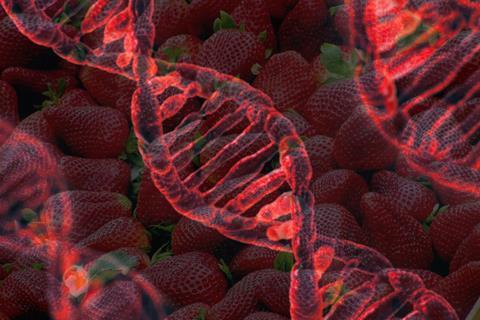DNA analysis can boost efficiency in selecting favourable traits in the fruit sector, according to experts ahead of the KeyGene seminar
Next week’s KeyGene seminar, which will be aired live online on 27 September, is set to focus on the beneficial use of DNA analysis in the breeding of asexually reproducing crops.
While DNA sequencing and genetic markers are regularly employed for large crops like wheat and corn, the practice is less common in fruits, with some breeders apparently put off by the seeming complexity. In strawberries, for instance, eight sets of chromosomes make the job of analysis significantly harder.
“There are some companies with good experience in DNA analysis,” says Erik Toussaint of plant research group KeyGene, “so we thought we’d hold a webinar to share experiences, views and the hurdles we face in introducing DNA analysis as a tool for breeding, as well as how to inspire people to think that maybe they too could start to include DNA analysis in their breeding.”

The experience of early adopters of DNA analysis approaches, the organisers state, shows that “building genomic and genetic toolboxes, staging the integration of different molecular technologies and building internal capabilities are crucial success factors”.
“We want to drive efficiency,” says Graham Clarkson of Edward Vinson, a fruit breeder in Southeast England and a leading soft fruit supplier to the UK’s main supermarkets. “DNA analysis can give us a greater understanding of what we can do. We’re planning for 12-15 years’ time. Everyone wants higher yields, but how do we get that yield along with increased shelf-life, better sizes, better flavour? For any trait you’re interested in, if there’s a genetic aspect to it, DNA analysis can help.”
“Traits are not always coded with just one gene,” adds Toussaint. “If six genes have an influence over the trait, it’s a heck of a job to find out which plants have this combination without looking at the DNA. When you find out which pieces of the DNA are involved in the trait, it really makes life easier.”
Whether breeding for greater flavour, or for resistance to disease, drought or extreme temperatures, DNA analysis has the ability to speed up the process.
For fruits that take years to produce, such as apples, being able to predict taste aspects during the seedling stage and rule out 10-20 per cent of the plants, can save both time and money, according to Toussaint.
“We all think we can say that is one type of banana, this is another type, so let’s crossbreed them for the perfect banana,” he says. “But there are plants that look the same that have a totally different genetic make-up; and there are plants that look very different to our eyes that are genetically almost identical. So understanding the DNA is a huge help.”
For Clarkson, DNA analysis has great potential in the soft fruit category, allowing our breeders to make more informed decisions and plan better.
“In the future, there will be more and more data, so it’s about how you interpret it,” he says. “We’re always learning and building up our knowledge. We hope to be able to grasp the opportunities offered by this technology. If everyone else is using DNA analysis, and you’re the last, that’s probably the biggest risk.”
And what about the off-putting complexity? “In the end, I hear breeders say it was not ‘easy’, but it was easier than they thought,” confirms Toussaint. “People may see the barriers as too great, but that used to be the case in the vegetables sector as well, and now the breeders have their own laboratories.”



